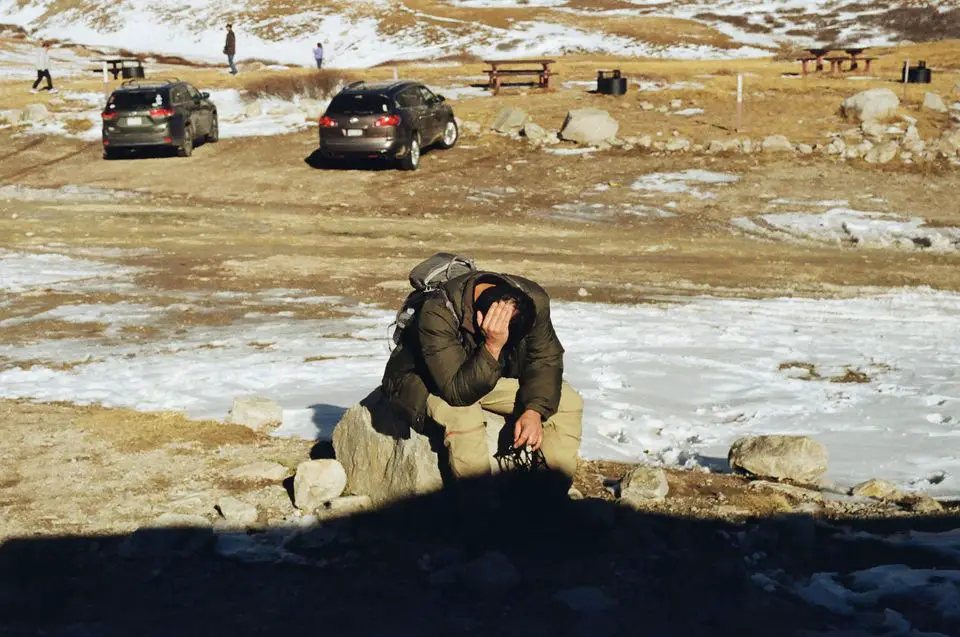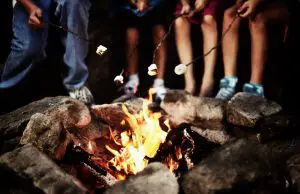Can You Get A Fever After Hiking? (Explained)

Have you ever gotten a fever after hiking? If you’re a seasoned hiker, you’ve probably experienced this, even if you don’t know what it’s called. This condition is actually called “hiker’s fever,” and it can be caused by a number of different things.
When you embark on your latest hiking adventures, you always want to make sure your health is in prime condition. Keeping good hiking health can involve gradually training for those more intense hikes and maintaining a good diet so your energy levels can be optimal.
However, even with the proper physical precautions and preparations, coming down with an illness, such as fever after hiking is still an unfortunate possibility.
There are several ways in which you can fall ill after your hike. Some of them are in your control, while others can come out of the blue. But with proper preparation and aftercare, you can keep Hiker’s Fever and any other hiking-related illness at bay.
Quick Links
What Is Hikers Fever?
Hiker’s fever can mainly be attributed to overwork and overexertion. However, there’s quite a bit more to it that is specific to hiking. Putting your body through high altitudes or unfamiliar temperatures can enable it to eat away at its resources to defend against any possible illnesses.
Overworking your heart and lungs can also put your body under great stress, which can compromise your immune system. This can result in a rather sharp hit to the immune system, meaning that when your hike is finished, your health is as compromised as ever.
Coming back into your everyday environment that may have different air quality or people who don’t cover their mouth when they cough can put you at great risk of developing a fever.
Thankfully, the fever you typically get from strenuous hikes is generally mild and can last anywhere from 1-3 days without the need for serious medical intervention.
What are some other ways you might get sick on the trail?
There are many factors; unfortunately, some are out of your control. But there are a few that you can be mindful of:
Nausea
Getting nauseous while hiking can be the result of several missteps. If you find yourself nauseous on the trail, it’s possible that you’ve either trekked too high, haven’t kept good hygiene, or simply didn’t eat enough. Being in the wilderness can expose you to all kinds of germs and pathogens, and not properly sanitizing your hands throughout the journey can potentially put you at risk of getting very sick on your hike. Make sure to bring plenty of hand sanitizer and ample water before you head out to the trails.
Secondly, make sure your body is fueled and ready to go. Even a 1 mile hike can burn up to 100 to 150 calories, so it’s easy to underestimate how much food you might need for a longer hike. If you’re feeling lightheaded or nauseous, it might be a sign that you need to eat something or drink some water.
Respiratory illness
If you suffer from any respiratory illnesses such as asthma or bronchitis, it’s always a possibility that you may suffer an attack while out on the trail. The increased use of your lungs and all the dirt and pollen in the air can exacerbate your symptoms.
To prevent this, do your research on the trails beforehand and always make sure to bring your inhaler or any other medication needed to keep your symptoms at bay.
Altitude sickness
Altitude sickness, also called acute mountain sickness, occurs when you hike altitudes that your body is unaccustomed to. Altitude sickness occurs due to the lack of oxygen at higher altitudes, which can bring on a real banger of a headache, as well as nausea, dizziness, and potentially a fainting spell or two. The best way to treat Altitude sickness is to simply descend to a lower altitude or just stay where you’re at and allow your body to acclimate to the heights. If you choose the latter, make sure to keep yourself properly hydrated or even consider getting a prescription from your doctor that can help to manage the symptoms of altitude sickness.
Hypo/Hyperthermia
Depending on which climate you plan to hike in, you risk developing temperature-related illnesses such as hypothermia or hyperthermia. Hypothermia occurs when the body becomes too cool, sometimes resulting in fatigue, chills, and confusion.
Avoid wearing cotton and pack on the layers to prevent hypothermia if the environment calls for it. On the very opposite of the spectrum, hyperthermia occurs when the body becomes way too overheated. Hyperthermia can evolve into heat stroke, which can be potentially life-threatening if proper precautions and care are not taken. To avoid hyperthermia, bring adequate amounts of water, sun protection such as a hat, or any other portable cooling devices.
Dehydration
Dehydration can be potentially life-threatening, especially if you plan an overnight hike in a particularly arid landscape. Make sure to bring ample amounts of water with you, even if you’re hiking in cooler temperatures. The hike is sure to raise your body temperature a little bit, so every drop counts.
If you go camping or thru-hiking, you need to find out the water sources along your route and always have a filter or some other method of purifying water.
Infections
Getting a few scrapes is always possible when you’re out on your hike. If these happen, ensure you bring adequate first aid care. Proper bandages and ointments will be a lifesaver in preventing any nasty infections or debris that could get into your wounds from the great outdoors.
This is VERY important in preventing bacterial infections. Unlike a virus, bacterial infections you may get while hiking can only be cured with antibiotics. So pay close attention to any open wounds you may develop and take the necessary steps to prevent infection. If you think you may have come down with a bacterial infection, see your doctor immediately.
How to Prevent Hiker’s Fever and other Hiking-Related Illnesses
As I said, there are things that are in your control when it comes to preventing hiker’s fever or any other hiking-related illness.
Here are a few tips that may help:
Wear the Proper Clothing
This one seems like a no-brainer, but you would be surprised at how many people don’t dress appropriately for their hike. Wearing the proper clothing helps with comfort and can prevent serious injuries and illnesses – and in more ways than you probably think.
For example, if you’re hiking in an area with a lot of poison ivy, wear long pants and sleeves to cover your skin.
If you’re hiking in an area where there might be snakes, consider wearing tall boots to protect your ankles and legs.
Prepare yourself Physically
Making sure you are adequately fit before you embark on your hike is going to be a key component in avoiding a hiking fever. The more you’ve been paying attention to your physical health and nutrition, the less likely it is that you will develop this illness after your hike. Instead of your body eating away at its resources, being health conscious before your hike will help your body sustain energy levels which will keep you feeling great.
Adequate Rest Before the Hike
You must allow your body proper rest to make sure that you have all the energy you need for your hike. Try to avoid strenuous activity or excessive travel for at least two days before your hike to avoid your body going into shock and eating away at your energy reservoirs.
Wear a Mask
Now I know not everyone likes wearing a mask, but it may be worth it in this case. Wearing a mask while you hike will help filter out any harmful bacteria or viruses lurking in the air. If you can’t stand the thought of wearing a mask, make sure to hike in an area where there is little to no human traffic.
Secondly, you should avoid all crowded areas after your hike. Due to having a potentially compromised immune system, you will be significantly more susceptible to coming into contact with pathogens, whether from the air quality or the groups of people you will potentially come across after your hike. If you really must be out and about, consider wearing a mask for at least two days after you complete your hike.
Keep Good Nutrition On and Off the Trail
It can be tempting to reward yourself with a Big Mac and fries after you’ve completed a challenging hike, but these moments of gratification can actually contribute to coming down with illness and fever.
To avoid this, make sure to eat as healthy as possible for at least three days after your hike. This is also important to do while you’re in the middle of your hike. It’s important to make sure you stay properly hydrated and that you’re snacking on appropriate foods that will contribute to your energy levels rather than deplete them.
Keep Your Hands Clean
To avoid any other illnesses besides a hiking fever from occurring after you’ve completed your hike, make sure to keep your hands as clean as possible. This may sound difficult, especially if you’re planning to use your hands for scrambling, so it’s imperative to have hand sanitizer on deck, especially if you’re planning to go to the bathroom au natural.
To prevent any transfer of feces particles or other dangerous pathogens, make sure to wash or sanitize your hands immediately after going to the bathroom or using your hands to climb.
Conclusion
Even with all these precautions in place, a fever can still happen. If you do ever find yourself coming down with a fever after hiking, the good news is that you probably won’t need to do much in terms of medical care, as the fever is likely to subside within 2-3 days. However, there are some things you can do to speed up the process and assure a successful recovery.
For starters, you should allow yourself an adequate amount of rest so that your body’s immune system can recover. Your current immune system is at an all-time low and needs a break to build back its strength. You should also note increasing your fluid intake to subset the dehydration you may experience due to your body’s increased temperature. Lastly, ensure you properly nourish your body with healthy meals to help your immune system regain strength.
Take these measures to prevent hiking-related illnesses, and you’ll be back on the trails faster than you know!






